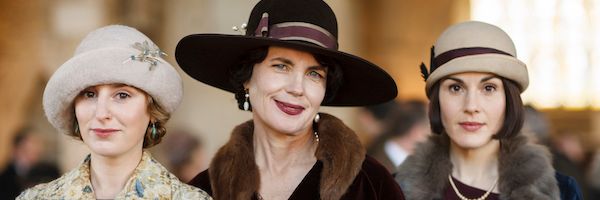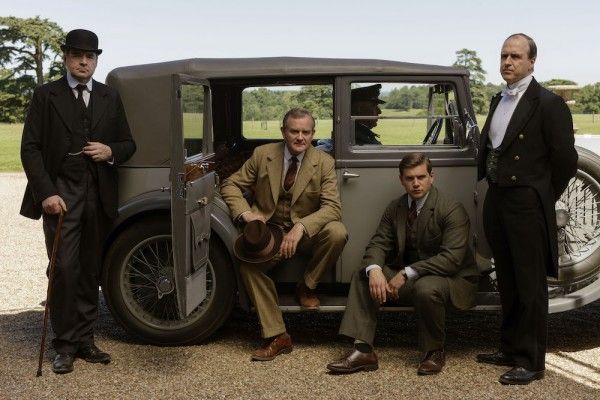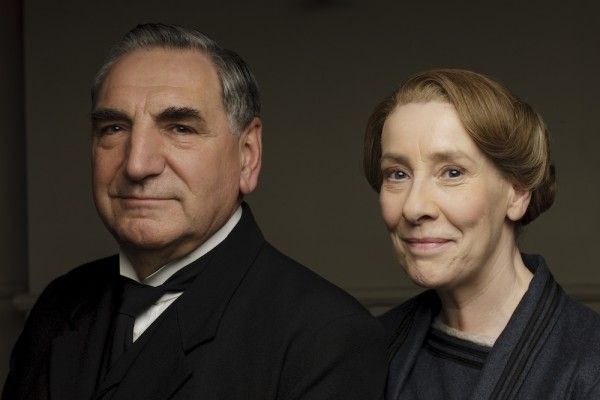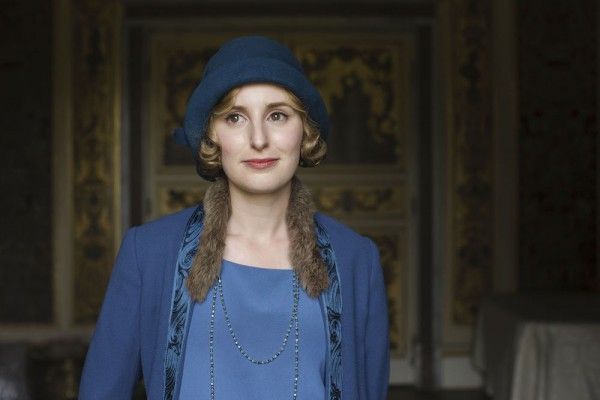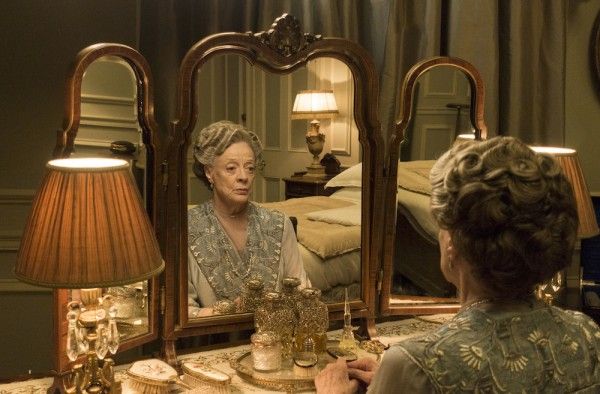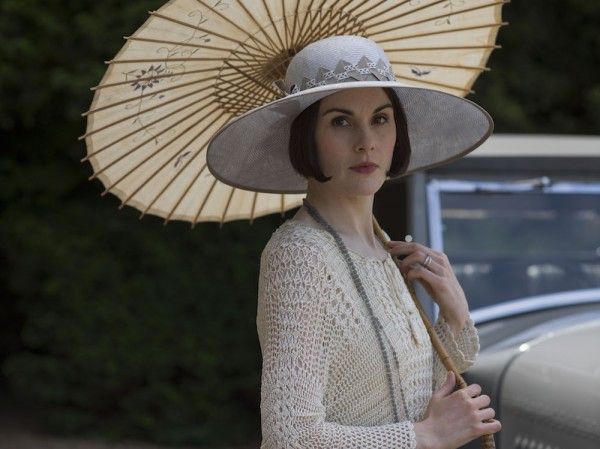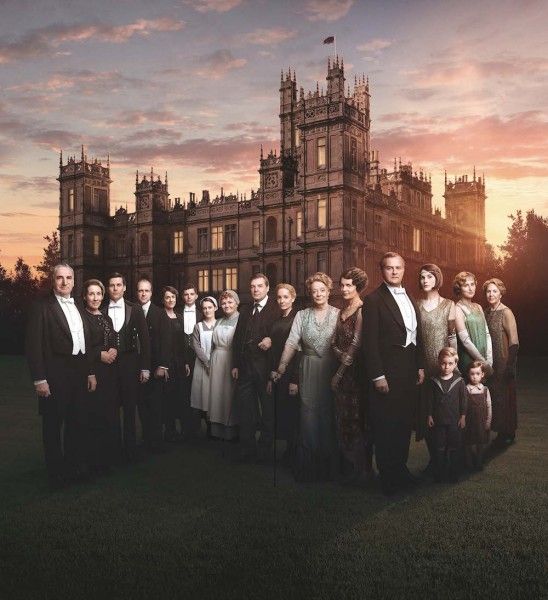For the first few minutes of the first episode of Downton Abbey’s sixth and final season, I had the strongest sense of deja vu. Was this the new season, or had I accidentally accessed episodes from last season? That’s the wonderful and frustrating thing about Downton, which came to a close in the U.K. over Christmas, but begins its final U.S. tour in January on PBS. There’s a familiarity to both the stories it tells and the way it tells them that makes the show easily decoded and a timeless reverie.
Few television series have the luxury of not only planning their ending, but being given the time to craft it in a way that feels like the right kind of goodbye. Several shows achieved it swimmingly in 2015, including Justified, Mad Men, and even Hannibal, which could have continued but sadly will not (though it left fans with a cliffhanger — quite literally — that managed to feel like a suitable conclusion). And in that vein, Downton Abbey spends most of its season wrapping everything up for its main cast in Jane Austen-like fashion, with weddings and babies in abundance. But its main concern always returns to the marching of time, and a changing world where upstairs and downstairs are no longer so divided.
As manors, estates, and the rich who once ruled in them are starting to fade away, the Crawleys seem to be one of the few remaining families who are not only able to keep their estate running, but able to do so with considerable elegance. This was all set up last year with Lady Mary (Michelle Dockery) and Tom Branson (Allen Leech) convincing Robert, Earl of Grantham (Hugh Boneville) to “modernize” the estate, allowing them to take over as agents (before Branson departed for America). It’s a thread that continues throughout the final season — that Downton, and the way of life there, is changing, but there’s hope now that it might not collapse into ruin like so many others.
The private lives of the family and staff are, of course, another matter. Lady Mary has found purpose in her work, and isn’t beholden to a romantic storyline (although one does, naturally, appear that could be potentially divisive), and even Lady Edith (Laura Carmichael) seems to be content with her (excellent) work running Gregson’s magazine, and making Marigold an official part of her life. Like her daughters, Cora (Elizabeth McGovern) has also spread her wings by increasing her work with the local hospital, where she sides with Isobel (Penelope Wilton), and spars with the Dowager Countess (Maggie Smith) over merging it with a larger hospital in York. The Crawley women are all strong-willed characters who, more than anything or anyone else on the show, fully embody a modernizing world. And Robert, after a decade of fighting it (by the show’s timeline, at least), now seems peaceful and even encouraging.
But no changes are more startling than downstairs, where Carson (Jim Carter) and Mrs. Hughes (Phyllis Logan) start the season off planning their wedding, while Molesley (Kevin Doyle) works out his frustrations at not having the chance to be a teacher, Daisy (Sophie McShera) works on her exams and plans for her future, and Thomas (Rob James-Collier) struggles to find his place in the household. No character has changed more than Thomas over the years, and Downton has often made mistakes in making his character return to villainy even when he seems to truly be changing. But then again that’s Downton’s signature and its legacy — even in the quickly changing world of the 1920s, some things will never really change. Mrs. Patmore (Lesley Nicol) will never not be in the kitchen, bustling around and barking orders at Daisy. And that is, in a way, a relief.
Season 6 does replace steeplechases with car races, and even allows the Crawleys to host an open house (the very idea!) to the public in order to raise money for charity, in pace with the changes of the day. These scenes in and outside of the house also allow the characters to interact in different ways, and face challenges that aren’t always about love triangles and the perils of unsolved crimes (the local constable is a constant at the house this season, and not just regarding the forever-suffering Bateses, played by Joanna Froggatt and Brendan Coyle). And though the final season manufactures a lot of unnecessary heartache, it also rewards viewers with a number of well-earned triumphs, and a parade of familiar faces from past seasons, as well as references to major characters who are now long gone.
There are plenty of things that are satisfying about Downton’s final stretch of episodes, and of course its final Christmas Special (which will run as part of the regular episodes PBS broadcasts). But there are also plenty of needlessly frustrating elements, as uneven writing and a lack of follow-through lessens the effects of some of the season’s better and most compelling storylines. Yet there’s hardly time to consider it, with so many characters and the pace at which the show tackles its tales. And then, of course, there’s the revolving door of gorgeous fashions, the sweeping score, and the ever-reliable witty confab among the characters which remains as sharp and decadent as ever, with settings and costumes that drip with elegance and nostalgia. It’s all part of both Downton’s charm and its irritating inconsistency.
Regardless, Downton Abbey was a watershed for PBS, as one of the few (first? only?) period pieces it has broadcast not based on a book, and therefore, exceptional fun for the Dickens and Austen crowds looking for something new, clever, and drenched with soapy portends. Its narrative twists and turns have sometimes been dictated by major actors or actresses wanting out, leaving dramatic and untimely deaths in their wake, but it’s all been part of the fun of Keeping Up with the Crawleys, and those who serve them.
It seems unbelievable that Downton Abbey is truly coming to a close, though not everything in this final run feels sewn up. There’s room to check in with the household in the future, should creator Julian Fellowes wrangle the cast into another Christmas Special at some point in the future. But if this really is the end, fans should be mostly pleased with how everything develops over the course of the season, and most importantly, how it all ends. Maybe it’s simplistic, and maybe its tendency towards happiness seems too convenient, but it’s also part of Downton’s halcyon comforts and dogged nostalgia, even as history’s darker portends start bearing down (the younger generation will come of age during WWII).
Near its conclusion, Downton Abbey's final season confronts another new year, alongside a rendition of “Auld Lang Syne.” The show is and was an idyllic look at a bygone era, one that was (prior to it) a forgotten time not very well explored on TV. And that, perhaps, is its greatest legacy. It was also a love letter to a family, upstairs and down. Like a real family, there were quarrels to be had with it, but ultimately, it deserves an embrace. Should old acquaintance be forgot, and old lang syne? Never, my dear.
Rating: ★★★★ Very good — Damn fine television
Downton Abbey’s final season starts Sunday, January 3rd on PBS.

